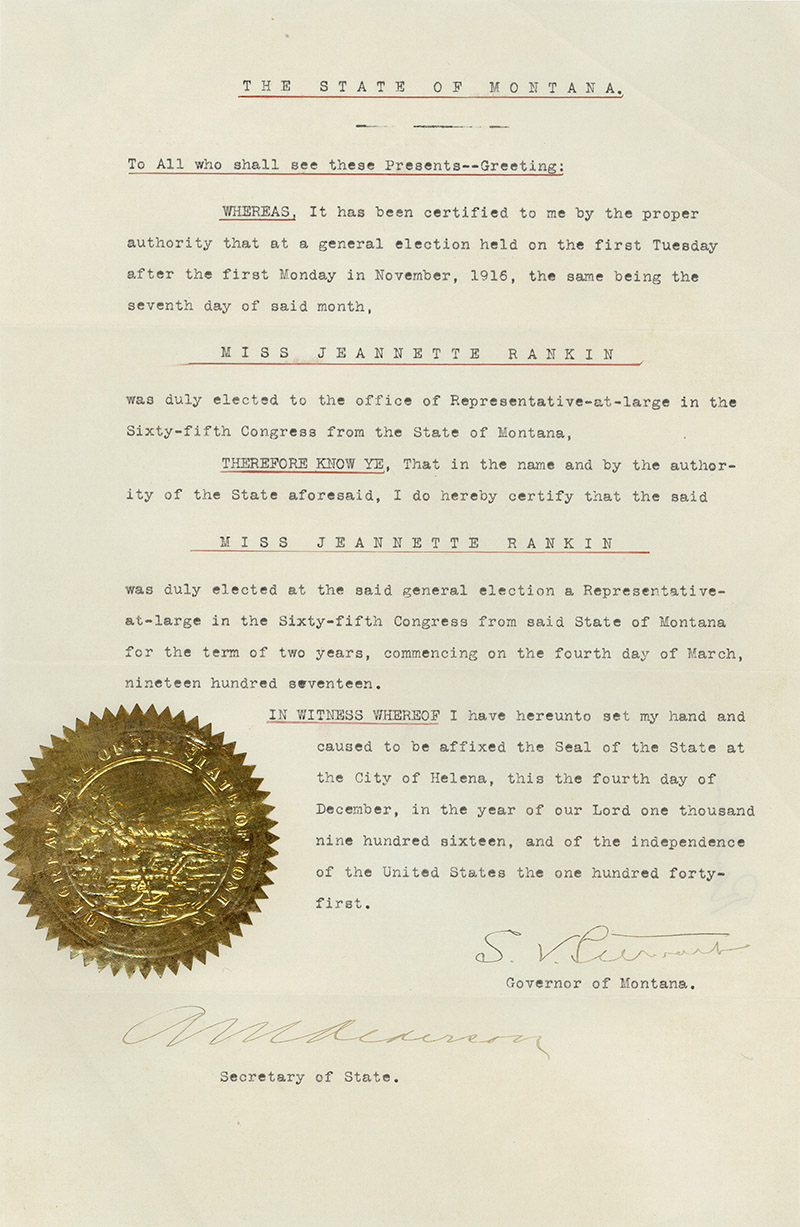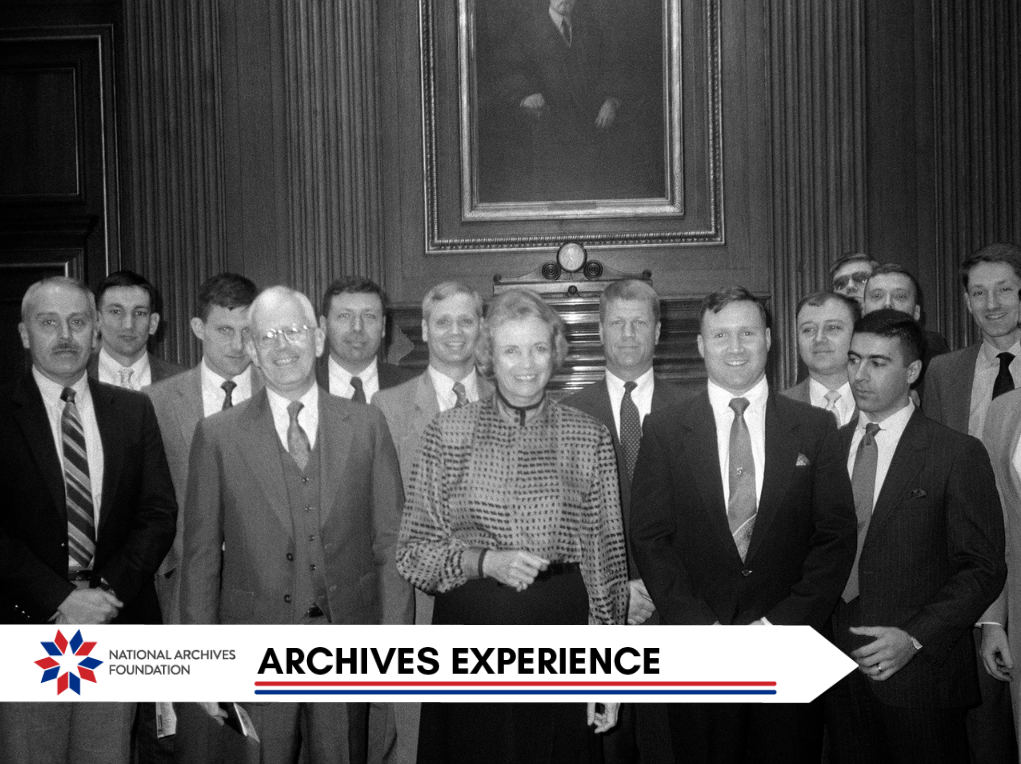Archives Experience Newsletter - April 23, 2024
Revolutionary Women
This month marks 29 years since Supreme Court Justice Sandra Day O’Connor became the first woman to preside over the court, temporarily sitting in for Chief Justice William H. Rehnquist. Fourteen years earlier, O’Connor had become the first woman to sit on the Supreme Court, ultimately paving the way for Elena Kagan, Sonia Sotomayor, Ruth Bader Ginsberg, Amy Coney Barrett, and Ketanji Brown Jackson.
From Sandra Day O’Connor to Sally Ride to Kamala Harris, our history holds countless moments when women broke through barriers and into arenas that had previously been exclusively occupied by men. In this week’s Archives Experience, we spotlight a few trailblazing women from America’s history…
In this issue
1776: Margaret Corbin
On November 16, 1776, Margaret Cochran Corbin dressed as a man and joined her husband to fight in the Revolutionary War. They fought together in the Battle of Fort Washington, where she helped her husband fire cannons against the British. When her husband was killed during the battle, Corbin stepped into his role and continued to fire.
However, Corbin didn’t make it out of the war unscathed—she was badly injured and permanently lost the use of her left arm. On July 6, 1779, the Continental Congress awarded Corbin a lifelong pension in recognition of her heroism and service.
Corbin was the first woman to receive a war pension, although it was valued at half the pension a man would have received at the time. Below is the Revolutionary War Pension and Bounty Land Warrant Application File for Margaret Corbin.

Revolutionary War Pension and Bounty Land Warrant Application File, Margaret Corbin
National Archives Identifier: 54299769
In 1925, the American Scenic and Historic Preservation Society inquired about the whereabouts of Corbin’s pension record. Their letter is below, alongside the response from Commissioner Winfield Scott noting that the pension record was likely destroyed when the British burned Washington in 1814.
1866: Mary Edwards Walker
During the Civil War, Mary Edwards Walker found herself near the front lines treating soldiers from both sides of the battle. She initially wanted to join the Union’s efforts as a surgeon but was not allowed to serve as a medical officer because she was a woman. In 1863, after her heroic efforts near the front lines of Chattanooga and Fredericksburg, Walker’s request to practice as a surgeon was accepted, and she became the first female civilian U.S. Army surgeon. After the war ended in 1865, Walker was awarded the Congressional Medal of Honor by President Andrew Johnson. However, in 1916, Walker’s medal was rescinded over concerns about her eligibility. To this day, Walker remains the only woman to have been awarded this prestigious medal, even if only temporarily.

Doctor Mary Walker
National Archives Identifier: 167248448
1867: Madam C. J. Walker
On December 23, 1867, Sarah Breedlove was born to formerly enslaved people on a Louisiana plantation. Fast-forward to 1906, when she launched her own line of hair products under her new name, Madam C. J. Walker. This business venture was the first of many that ultimately turned her into the first black female self-made millionaire in America. Her ability to achieve success amid the Jim Crow landscape is a testament to her entrepreneurial mindset and tenacious spirit.
At the 1912 National Negro Business League’s Convention, Walker stood at the podium and introduced herself by saying, “I am a woman who came from the cotton fields of the South. I was promoted from there to the washtub. Then I was promoted to the cook kitchen, and from there I promoted myself into the business of manufacturing hair goods and preparations.”
Walker was a political activist, a philanthropist, and an entrepreneur who paved the way for social change in America. The video short below highlighting Walker’s life was produced by the National Archives as part of their “Inside the Archives” collection.
Madam C.J. Walker in the National Archives
(3 minutes 28 seconds)
Source: US National Archives YouTube channel
1916: Jeanette Rankin
The first woman elected to the U.S. Congress, Jeanette Rankin was sworn in as a representative for Montana on April 2, 1917. She was a lifelong pacifist, and it was her vote against U.S. entry into World War I that cost Rankin her reelection in 1918. However, she didn’t give up on her commitment to public service. Rankin won a second term in the House of Representatives in 1940, during which she held true to her pacifist beliefs and was the only member of Congress to vote against declaring war on Japan. Rankin did run for a seat in the U.S Senate in 1918 but was unsuccessful.

Jeannette Rankin’s election certificate
National Archives Museum
1932: Hattie Caraway
In January 1932, Hattie Caraway became the first woman to be elected to the U.S. Senate. Caraway represented Arkansas. She had previously filled her husband’s seat after his death and then decided for a general election bid after her short-term appointment ended. While a general election win was considered a long shot, Caraway won a landslide victory and served in office until 1945. In addition to being the first woman elected to the Senate, she was also the first woman to chair a Senate committee in 1933 and the first woman to officially preside over the Senate in 1943. Caraway’s official election certificate can be seen below, followed by a photo of Caraway (second from left) at an Arkansas State Society Picnic.

Election Certification of Hattie Caraway
National Archives Identifier: 1943366, page 2

Arkansas State Society Picnic
National Archives Identifier: 348667617
The women in this week’s newsletter are just a few of those who have altered the American story. We invite you to help us spotlight women from throughout history by sharing the name of your historical (s)heroes below. We may share your story on social media in the next few weeks, or we may even feature your favorite female in a future newsletter.












